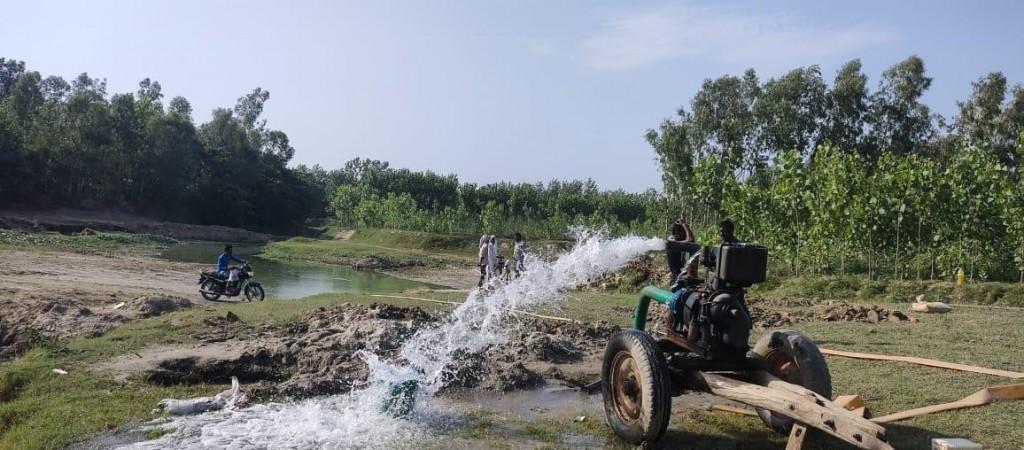
For decades, farmers in western Uttar Pradesh faced a cruel paradox. Fields remained flooded for weeks during monsoon, yet diesel pumps ran dry after barely an hour in summer. "For over 60 years, we had to carry charpais into the fields to cut rice because waterlogging made it impossible to harvest," recalls Krishna Pal, pradhanpati of Ladaura Narayanpur in Chamraua block. Nearby, farmer Chandrapal describes the opposite problem: "Even at depths of 130–140 feet, water is available in very small quantities."
This cycle of scarcity and excess is what The Art of Living (AOL), under the guidance of spiritual leader Gurudev Sri Sri Ravi Shankar, has set out to change. Partnering with the Uttar Pradesh government, AOL has been working in hundreds of villages, deploying modern hydro-engineering alongside grassroots mobilisation to restore groundwater, reduce flooding, and strengthen farmer resilience.
"Rivers are not just bodies of water. They carry our culture, our economy, and our very life. To revive a river is to revive life itself," Gurudev says of the initiative, which spans over 72 rivers and tributaries nationwide, impacting 3.4 crore people across 20,000 villages.
Science Meets Tradition
In Rampur district alone, over 100 villages have seen results. More than 300 recharge shafts were dug across 132 ponds, supported by 15 injection wells and a pioneering sub-surface dyke — a feat once thought impossible in alluvial plains. Engineers used geophysical surveys to locate clay beds beneath the Kosi tributaries and created an underground barrier of perforated PVC pipes, cement, and slurry to slow the subterranean water flow.

"Sub-surface dykes were earlier considered unfeasible in this terrain," says Dr. Lingaraju Yale, AOL's National Director for River Rejuvenation. "But with careful surveys we were able to build one cost-effectively."
The impact is visible. Wells near the dyke now hold water longer. Fields that once stayed waterlogged for a month dry out within 8–10 days, enabling timely harvests. Irrigation costs have dropped as farmers run pumps for fewer hours.
Bundelkhand's Droughts and the Return of the Revati
In Bundelkhand's rocky terrain, where floods and droughts alternate with devastating regularity, AOL teams working with HAL, Ashirvad Pipes, and the local administration constructed 238 recharge structures in Lalitpur district. Government reports show groundwater levels rising by 5–6 feet in parts of Birdha block.
The most symbolic success is the revival of the Revati river. Forgotten for decades, it now flows through six gram panchayats. Beginning in 2022 with only two recharge shafts, the project has expanded to 246. Local leaders stopped the plantation of water-guzzling eucalyptus and replaced them with indigenous trees such as neem and jamun.
"Earlier, water stagnated for weeks and harvest was delayed. Now, recharge structures clear it in days, and we can cut the rice on time," says Krishna Pal.

Over 16,000 people have attended water literacy programs under the Jal Jagrukta Shivir banner, learning about daily water needs and conservation. This blend of science and community participation has earned recognition from the Ministry of Jal Shakti and the Ministry of Rural Development.
In Magermau, Rampur, village pradhan Yaadram Lodhi gestures at a pond refilled by recharge shafts: "For years we worried if our wells would even have water for cattle. Now farmers can plan sowing without fear."
For regions long resigned to water crises, the revival of rivers like the Revati signals not just restored groundwater but restored hope.











